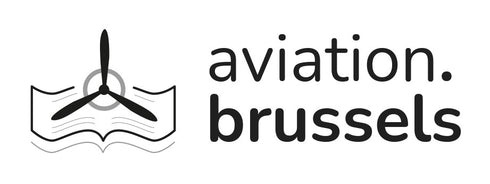No.S1 - Battle of Britain
Product image 1

Product image 2

Product image 3

Product image 4

Product image 5

Product image 6

Product image 7

Prix régulier 25,00 € TTC 6%
Hawker Hurricane, Supermarine Spitfire, Messerschmitt BF.109
The two main single-engined, single-seat fighter aircraft of the Royal Air Force in 1940, the Hawker Hurricane and the Supermarine Spitfire, gained considerable fame and an assured place in history for their part in the Battle of Britain.
Characteristics
| Size | 18,5 X 24,7 X 0,3 cm |
| Nbr. de pages | 50 |
| Book cover finition |
Perfect paperback |
| Published date |
1969 |
| Author | Christopher F. Shores |
| Collection / Serie | AIRCAM AVIATION SERIES |
| Editor | Osprey Publishing Limited, England |
Description
The Spitfire was undoubtedly the more advanced design of the pair, more pleasing to the eye and offering both a higher performance and a greater sensitivity of control than the Hurricane. However, it was not available in anything like the same numbers as the Hawker machine, which, although bearing the brunt of the Battle, was overshadowed in the public eye by its more glamorous stablemate. A similar situation existed among the pilots of these machines, few people nowadays realizing that the majority of the pilots engaged in the Battle were N.C.O.s, and the much more widely publicized officers were in fact in the minority...
The two main single-engined, single-seat fighter aircraft of the Royal Air Force in 1940, the Hawker Hurricane and the Supermarine Spitfire, gained considerable fame and an assured place in history for their part in the Battle of Britain. The Spitfire was undoubtedly the more advanced design of the pair, more pleasing to the eye and offering both a higher performance and a greater sensitivity of control than the Hurricane. However, it was not available in anything like the same numbers as the Hawker machine, which, although bearing the brunt of the Battle, was overshadowed in the public eye by its more glamorous stablemate. A similar situation existed among the pilots of these machines, few people nowadays realizing that the majority of the pilots engaged in the Battle were N.C.O.s, and the much more widely publicized officers were in fact in the minority.
At the start of July 1940, when the initial phase of the Battle began with German attacks on shipping in the English Channel, both aircraft had already been tested in combat over France, the Hurricane throughout the fighting on the Continent, the Spitfire during the Dunkirk evacuation and both had shown up well. In July the air defence of Great Britain, in the hands of Fighter Command, was the responsibility of three operational Groups, No. 11 covering the south of England, including London, No. 12 covering the Midlands, and No. 13 covering the north of England, Scotland and Northern Ireland. These three Groups had under their command 44 squadrons of single-seat fighters, 19 of these flying Spitfires, and 25 Hurricanes. Twenty-three were within 11 Group, 15 with Hurricane, and many of those within other Groups were scarcely more than cadre units, reassembling and re-equipping after the withdrawal from France, or newlyforming.
AIRCAM AVIATION SERIES LATE 1960S/EARLY 1970S
The Aircam Aviation Series Of Books Took A Largely Pictorial Look At Classic Military Aircraft Types, With Only A Short Narrative Text Serving As Introduction. A Companion Series Of Specials Portrayed The Camouflage And Markings Worn By Various Military Air Arms And Flying Units.
After 5-6 Pages Of Concise Text Introducing The Subject, The Remainder Of Each Book Comprised B+W Photographs, 8 Pages Of Colour Profile Artwork And 3-4 Pages Of Small Plan-View Tone Drawings, Showing The Upper And Lower Surfaces Of The Aircraft Illustrated In Colour. The Original Editions Of The First Few Titles Were Printed Entirely On Glossy Paper, But Later Titles And Reprints Appeared With Matt Paper For All Except The Colour Profiles. This Resulted In Rather Poor Reproduction Of Some Of The Photographs.
Subsequent Reviewers Have Cast Doubt On The Accuracy Of Some Of The Colour Profiles, But The Range Of Aircraft Chosen Is Still Impressive And The Colour Schemes Often Unusual. The High Prominence Given To Japanese Aircraft Was Very Unusual For The Late 1960s/Early 1970s. Text written by aeroflight







